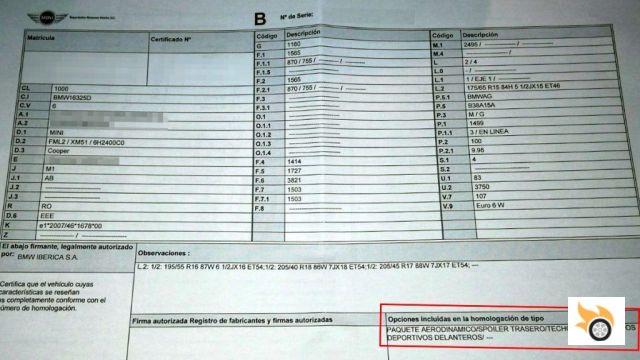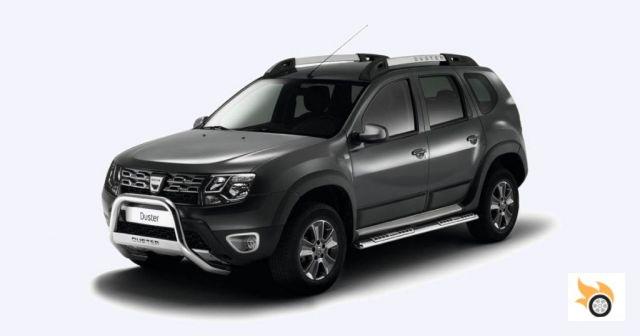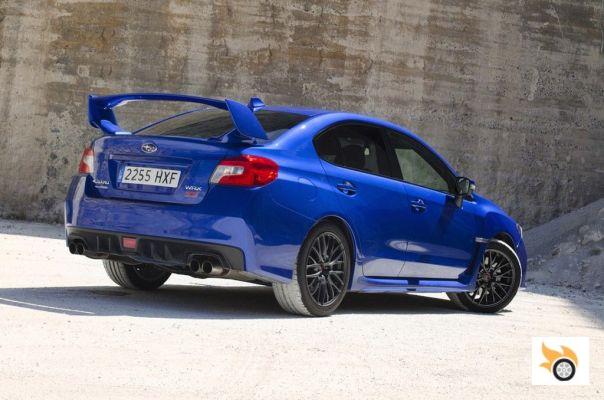In the case of the community of Madrid, for some years, the sector is liberalized. This means that any person or company that meets the requirements to set up an ITV can do so, and set the price they want (lower than the recommended price). Apart from all this, the philosophy of the ITV should be to help. To help identify existing faults in the vehicle (those typified in the Inspection Manual) and inform the user of them, so that they understand their importance and can seek a solution.
To begin this series we are going to talk about homologations, but in order to understand what comes next it is necessary to explain a concept that very few people know, the vehicle homologation password.

The homologation password indicates the name of a document called "Ficha Reducida" by means of which a brand homologates a specific vehicle. This password can take many forms depending on the type of vehicle. The most common form might well be: e1*2001/116*0501*01, where 2001/116 refers to Directive 2001/116/EC, although there are many directives that are updated over time. In the vehicle's Reduced File you can consult all its characteristics (tyres, exhaust reference, measures, authorized masses, etc.) depending on the type, variant and version of the vehicle. In other words, this is how the vehicle left the factory.
Moving on to the homologation in ITV is common that, when buying a car, we are offered at the dealership a number of accessories that make it more attractive. To understand a little of what we are talking about, these are two examples:

Dacia Duster
Dacia is not known for having a very equipped cars, however, they have many options in accessories, such as a chrome fender or footrests. We won't deny that such a vehicle gains a lot with some well-chosen accessories.

Opel Corsa
The mid-range has accessories available, such as the addition of bumpers, sills and spoilers that make it a sportier car aesthetically, but with a more affordable engine on a day-to-day basis.
These two vehicles do not leave their respective factories, so everything that is mounted on the dealership is necessary to homologate it. On the other hand, there are cars that come with factory accessories. The question then is: How can I know if my car has everything homologated? The answer is: Looking at the technical data sheet.
If it comes from the factory with the accessories, it is the factory that, when making the technical sheet, includes these accessories.
Of course the sports versions of some cars, for example (Renault RS, Ford RS and ST, Opel OPC, Subaru STI, etc.) leave the factory in different conditions to the more normal versions (different bumpers, spoilers, etc.) although they also have a catalogue with other different accessories, such as spoilers and body kits that would have to be homologated.
If it does not come from origin, it is the dealer, or the end user, who must go to the ITV to homologate it.
The steps for the homologation of original accessories are simple.
- Ask for a Conformity Report from the vehicle brand. It is digitally signed by the person in charge of homologations of the brand and it shows the reform code that applies and the fields of the technical data sheet that must vary (total width, total height, etc.). All or almost all the original accessories are within the type approval of the vehicle and therefore it will not be necessary to carry out a Technical Project*.
- Workshop Certificate that certifies the installation of the accessories. It must be the original document, with the signature and stamp of the person in charge of the workshop. Although we ourselves, if we have the appropriate knowledge and means, have fitted the accessories, it is a workshop with an Industrial Registration number (authorization from the General Directorate of Industry to carry out the activity) and a Special Registration number (each reform will need a speciality such as Mechanics, Bodywork and Painting, Electricity, etc.) who must issue the Certificate. The parts must be accompanied by an assembly sketch where the parts are identified and how they are fitted, so that they can be checked at the ITV (MOT).
- Go to the ITV with the vehicle, the technical data sheet, the registration certificate, the Conformity Report and the Workshop Certificate. For the legalization of reforms in ITV has to go the owner of the vehicle or a person authorized by him.
- At ITV the accessories will be noted on the technical data sheet.
Extra: Once the accessories have been approved, the vehicle must be presented at the ITV for periodic inspections as it appears on the technical data sheet, i.e. with the accessories that have been legalized.
If we want to return the car as it was, we will also need to go to the ITV. This time it will only be necessary a Workshop Certificate that endorses the dismantling of the elements in question.

I hope this article will be of help to those who have purchased a car with accessories in recent months and will have to pass the first ITV to your vehicle, so you do not find a surprise in the form of "Unfavorable" in your file.
(*) Technical Project: Document for the homologation of certain Major Reforms, such as the installation of accessories outside the type approval of the vehicle, separators/spacers, sports springs, etc.

























